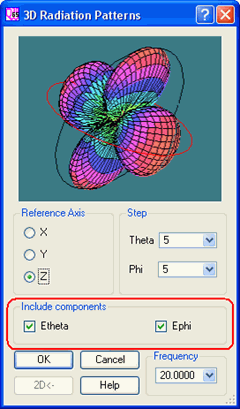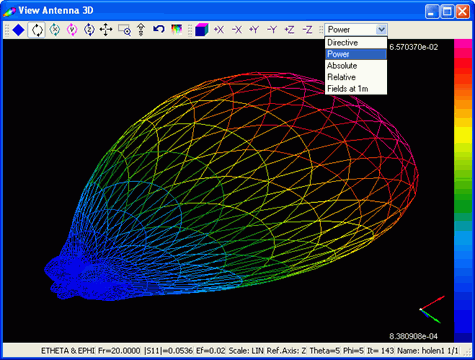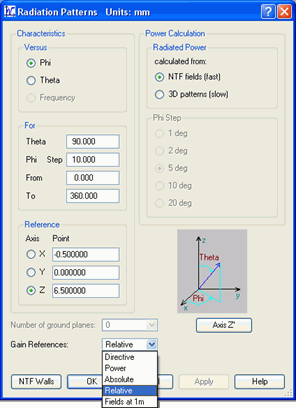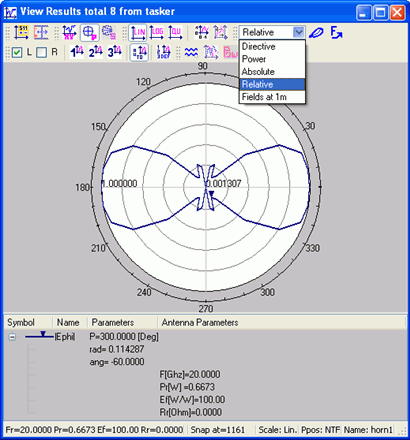


© 2017 QWED Company. All rights reserved. 2017 | Home | Events | Products | Applications | Projects | About | Support | Log In
SOFTWARE PRODUCTS
HARDWARE PRODUCTS
APPLICATIONS
ABOUT
SUPPORT
Re-structuring and extension of NTF postprocessing
4. Re-structuring and extension of NTF postprocessing
The users involved in antenna modelling will be interested in new options of antenna pattern calculations (NTF postprocessing). In 3D radiation patterns, there is an option of displaying either the complete pattern (as in previous versions of the software) or patterns for Etheta, Ephi separately. Moreover, manual scale settings are now unrestricted. Refer to Section UG 2.3.1 for more details.
The users involved in antenna modelling will be interested in new options of antenna pattern calculations (NTF postprocessing). In 3D radiation patterns, there is an option of displaying either the complete pattern (as in previous versions of the software) or patterns for Etheta, Ephi separately. Moreover, manual scale settings are now unrestricted. Refer to Section UG 2.3.1 for more details.
Up to the version 6.0, the 2D and 3D patterns have been scaled in directive gain. Now the user has five choices: directive gain, power gain, absolute gain, relative gain or amplitudes of fields at 1 m from the antenna. Respective definitions are given in Section S 2.3. Note that the shape of relative gain characteristics is often one of the basic targets in optimisation. We believe it will be used in joint applications of QW-V2D and QW-OptimiserPlus. Examples are discussed in Section V2D 2.8.
In version 6.0, we introduced a possibility of calculating 2D radiation patterns with respect to an arbitrary axis of any direction (with the use of Euler angles of axis rotation). However, this option was not applicable in the case of symmetry boundary conditions. The restriction has been removed in version 6.5 as demonstrated by the examples of Section V2D 2.11.
We believe that the above options make the software much more flexible in antenna design.
We believe that the above options make the software much more flexible in antenna design.
Options of displaying the complete pattern or patterns
for Etheta and Ephi separately.
for Etheta and Ephi separately.
Options of the reference gain in the View Antenna 3D window.
Options of the reference gain in the View Antenna 2D window.


discover accurate EM modelling








